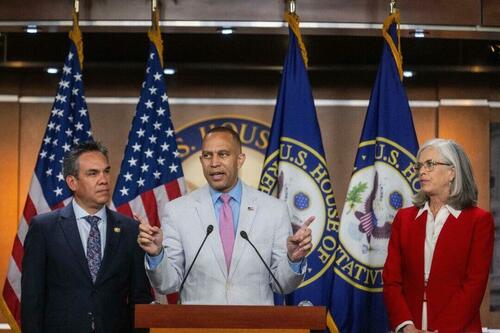Ozzy Osbourne is dead, but his dark influence lives on – LifeSite

Wed Jul 23, 2025 – 12:16 pm EDT
(LifeSiteNews) — Ozzy Osbourne, the infamous heavy metal star and frontman for the rock band Black Sabbath, has died at the age of 76.
For decades, Osbourne was one of the darkest figures in the music scene—he went by the nickname “the Prince of Darkness”—but he was not fringe. Between his time as the frontman for Black Sabbath (he was fired for drug use in 1979) and his solo career, he sold 100 million albums and was inducted into the Rock and Roll Hall of Fame twice, once with the band, and once as a solo artist.
Famed for his substance abuse, Osbourne was, for millions, a gateway drug into dark realities. He bit the heads off both a bat (onstage) and a dove; snorted a line of ants; and tried to kill his wife Sharon in 1989 while he was high on drugs. He famously got clean from drugs and booze; the dark themes remained and eventually went mainstream. Black Sabbath played at Buckingham Palace at the Queen’s Golden Jubilee Concert in 2002.
The band Black Sabbath pushed occult themes, leading then-Cardinal Joseph Ratzinger (later Pope Benedict XVI), to condemn his “subliminal satanic influence” and call on Osbourne to stop performing “satanic rituals” at concerts, warning that he would “bring harm” to his audiences.
The influence wasn’t that subliminal. The band was named after an Italian horror film; their first album, Black Sabbath, began with the familiar sound of a church bell tolling and the grim line: “Leave the Earth to Satan and his slaves.” Despite their open embrace of darkness, reviews noted that countless fans flocked to their anthems: “Their influence was so wide-ranging that critics have even argued that individual songs – such as 1970’s Electric Funeral and 1971 hit Children of the Grave – helped to form sub-genres of metal.”
Hedonism and dark themes have always been foundational to the rock n’ roll scene, but Osbourne and Black Sabbath mainstreamed it and took it further. Their sets featured blasphemous displays of Christian imagery; their first live album was titled “Live Evil”; one of Osbourne’s first solo albums was aptly titled “Speak of the Devil.” The band claimed that they did not advocate open devil-worship, but few were convinced by their insistence.
Occult and Satanist groups became fans of the group. The band members were invited to “black masses,” which they said they refused. This, ironically, was the reason the band members wore metal crosses around their necks—Osbourne would do so until his death. The band’s mascot, meanwhile, was a devil they called “Henry the Flying Demon.”
“There was some black magic organization that wanted us to play at a stone circle,” guitarist Geezer Bulter recounted. “We said no – we were sort of against Satan, as opposed to promoting it – so they allegedly cursed us. The head of the white witches call our management and said he knew we had a curse put on us, and we should wear crosses and he’d do a ritual thing. It all sounds so hokey. That’s why we started wearing crosses!”
Butler, who grew up Catholic, said that his experience with “organized religion” made him curious. “I’d always hear about Satan, so I wanted to find out what that was about,” he said. “So I started reading up on astral planes, all that kind of stuff. I used to have weird experiences when I was a kid; orbs appearing to me … When I was four, I felt a presence in the room, and I saw this orb hovering above my head and I could see the future in it and it just disappeared into the fireplace. I used to have these dreams. … I’d wake up and it would happen the next day.
Osbourne’s middle age makeover, in which he got sober, had his career rebooted by his wife Sharon, and became the goofy dad of the MTV reality show “Meet the Osbournes,” was good for his personal health but bad for the culture. Black Sabbath and Osbourne himself became “classic,” and time made their music seem less dangerous. Neither Osbourne nor the band had any idea what sort of forces they were toying with, or what their role in midwifing such forces into the music scene would mean for the millions who flocked to hear their anthems. Osbourne is dead, but his dark influence lives on.

Jonathon’s writings have been translated into more than six languages and in addition to LifeSiteNews, has been published in the National Post, National Review, First Things, The Federalist, The American Conservative, The Stream, the Jewish Independent, the Hamilton Spectator, Reformed Perspective Magazine, and LifeNews, among others. He is a contributing editor to The European Conservative.
His insights have been featured on CTV, Global News, and the CBC, as well as over twenty radio stations. He regularly speaks on a variety of social issues at universities, high schools, churches, and other functions in Canada, the United States, and Europe.
He is the author of The Culture War, Seeing is Believing: Why Our Culture Must Face the Victims of Abortion, Patriots: The Untold Story of Ireland’s Pro-Life Movement, Prairie Lion: The Life and Times of Ted Byfield, and co-author of A Guide to Discussing Assisted Suicide with Blaise Alleyne.
Jonathon serves as the communications director for the Canadian Centre for Bio-Ethical Reform.












